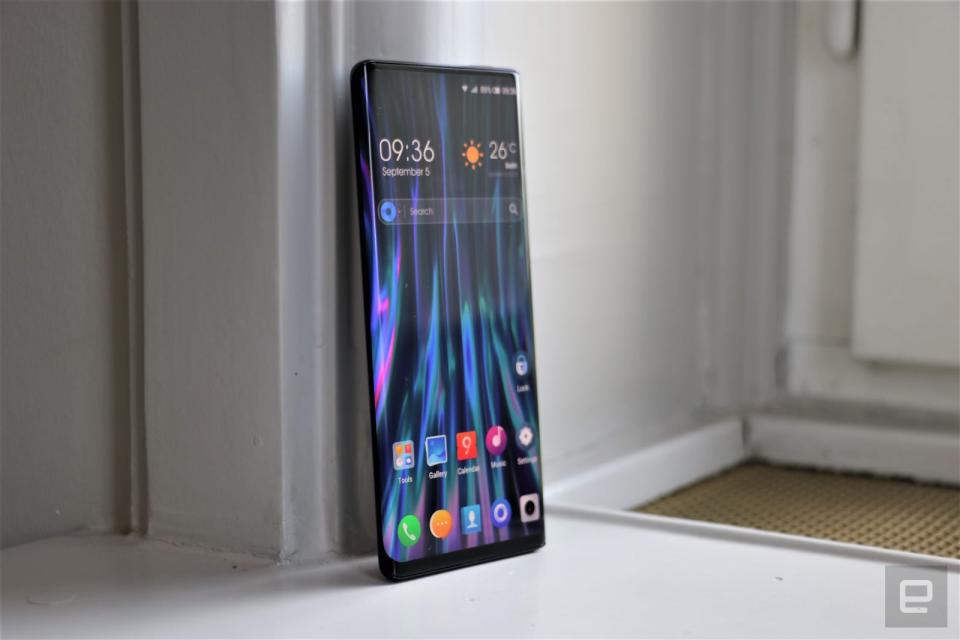TCL's first major smartphone is affordable like its TVs
The company's first globally available phone offers a lot for the money.

You may know TCL as the maker of affordable TVs, but the company makes a whole lot more than that. Like Samsung and LG, the Chinese conglomerate also produces appliances like washing machines, as well as mobile phones. That's not just under the brands it owns like BlackBerry and Alcatel, either. TCL itself has smartphones, too -- they just haven't been widely available outside of China. That is, until now. At IFA 2019, the company is unveiling the TCL Plex -- its first globally available smartphone (not counting the US, anyway). And it's surprisingly feature-packed.
What's intriguing about the Plex isn't just its status as the company's first widely available phone, but also its price. For €329 (about $360), TCL is offering a 6.53-inch LCD screen and a triple camera system, among other features, in a pretty body.
The display runs at a full HD+ (2,340 x 1,080) resolution, which I can deal with for the price. I was actually surprised because the Plex's screen looked bright, detailed and colorful when I checked out some pictures during our hands-on. That might be thanks to the visual-enhancing tech that TCL implemented called Nxtvision, which is a display engine that ensures a Delta-E color accuracy rating of less than 1 (closer to 0 is better).
The engine will also detect your surroundings and tweak the screen's output to adapt to the color temperature around you. The system will also tweak any video to make it HDR, and while the panel isn't officially certified to be compliant with any known HDR standard, the company says it's capable of rendering HDR10-level of dynamic range. It's not clear whether this means you'll be able to view HDR10+ content from the likes of Netflix, for example.
Like most modern smartphones, the Plex's panel takes up pretty much the whole front of its face, with a cutout to house the 24-megapixel selfie camera. TCL pushed the hole to the top left corner instead of in the middle like Samsung's Note 10+, though.
There are three cameras on the back of the phone: a 48-megapixel primary sensor, a 16-megapixel wide-angle lens and a low-light camera with a huge 2.9-micron pixel size. That last sensor has a correspondingly low 2-megapixel count. We weren't able to test the camera's performance in dark environments in our bright, sunlit hands-on room, but I had fun with an interface in the app that showed what each sensor was seeing. The wide-angle lens, in particular, has the same 123-degree field of view as flagship phones from Samsung and Huawei, and made shooting landscapes a lot of fun.

A fingerprint reader sits below the three cameras, which feels like a relic given most of the industry has moved to in-display readers. Given this is an LCD panel, though, TCL wasn't able to fit a scanner in the screen. The phone's build also feels somewhat outdated -- its rectangular shape and holographic finish remind me of Huawei's Mate 10, which launched two years ago. Although, for €329, I'm not going to demand all the latest features.
For that price, you'll have to live with some other tradeoffs of course, and the most underwhelming spec is the Snapdragon 675 processor powering this thing. You'll also find a 3,820mAh battery in the Plex, and though TCL couldn't give us an estimate for runtime, the company could say that the phone could recharge up to 50 percent in 32 minutes. It's not earth-shattering, but it's faster than a lot of the similarly priced competition.

All told, there is a lot about the TCL Plex that piques my curiosity. The company's experience as a display company means there's a lot of potential for it to cut down on costs and innovate on things like folding screens or curved edges. TCL already showed off its folding phone prototypes at MWC, and in Berlin, it had a couple of new concepts to share as well. One smartphone had a display that curved on both edges in a "waterfall" style, while another was an all-glass handset with no buttons or sensors on the exterior at all.
These are intriguing attempts to stand out, which make me all the more invested in seeing what TCL's first phone brings to the table. From what I can tell so far, it seems like the affordable cost will at least give other companies incentive to bring down their device prices, which ultimately will be good news for consumers.
